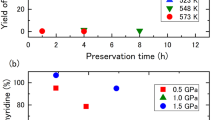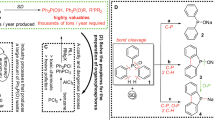Abstract
N-Dephenylation of N-phenyl-2-naphthylamine (PBNA) is strictly limited in dogs, and a 5 mg/kg dose gives 0-10 microng of urinary 2-naphthylamine (BNA), which does not appear to undergo further metabolism. Neither 2-naphthylhydroxylamine (BNHA) nor 2-amino-1-naphthylsulphate were detected in the urine of treated animals. Urinary output of BNA varies markedly between dogs, and at different times in the same animal. The extent of PBNA N-dephenylation is unaltered by chronic administration. Calculations based on Druckery and Küpfmüller's equation (1948) and present data indicate that, for dogs to form BNA tumours through exposure to a relatively high dose-level of PBNA, the period of daily dosing would occupy, or even exceed, the normal life-span. The carcinogenic risk of PBNA to human subjects is discussed.
This is a preview of subscription content, access via your institution
Access options
Subscribe to this journal
Receive 24 print issues and online access
$259.00 per year
only $10.79 per issue
Buy this article
- Purchase on Springer Link
- Instant access to full article PDF
Prices may be subject to local taxes which are calculated during checkout
Similar content being viewed by others
Rights and permissions
About this article
Cite this article
Batten, P., Hathway, D. Dephenylation of N-phenyl-2-naphthylamine in dogs and its possible oncogenic implications. Br J Cancer 35, 342–346 (1977). https://doi.org/10.1038/bjc.1977.48
Issue Date:
DOI: https://doi.org/10.1038/bjc.1977.48
This article is cited by
-
Quantification of N-phenyl-2-naphthylamine by gas chromatography and isotope-dilution mass spectrometry and its percutaneous absorption ex vivo under workplace conditions
Archives of Toxicology (2017)
-
Metabolic dephenylation of the rubber antioxidant N-phenyl-2-naphthylamine to carcinogenic 2-naphthylamine in rats
Archives of Toxicology (2013)
-
N-Dephenylated and N-phenyl urinary metabolites of mociprazine (CERM 3517) in beagle dogs after oral administration. A mass spectrometric determination
European Journal of Drug Metabolism and Pharmacokinetics (1991)
-
A comparative study of the chronic effects of magenta, paramagenta, and phenyl-?-naphthylamine in Syrian golden hamsters
Journal of Cancer Research and Clinical Oncology (1979)



